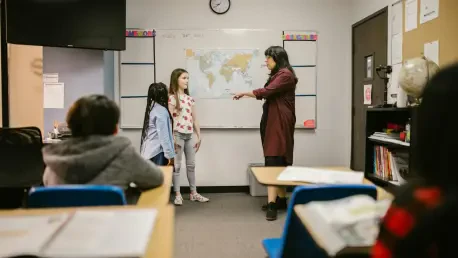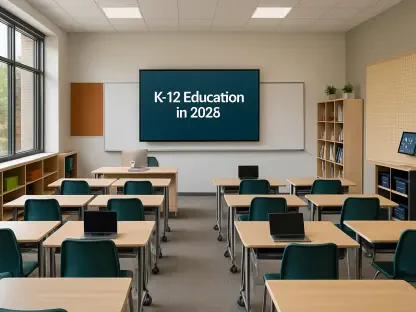The rapid evolution of educational technology has introduced tools that reshape learning in classrooms, offering unprecedented engagement and interaction opportunities. Among these innovations, Gimkit emerges as a dynamic, game-based learning platform that combines education with interactive gameplay, engaging both teachers and students. It showcases how educational platforms can transcend traditional teaching methods, tailoring education to cater to the digital inclinations of today’s learners. This transformation resulted from the global shift towards digital classrooms during pivotal periods and highlights the significance of integrating technology with education to meet emerging learning demands.
The Engaging Nature of Gimkit
Gimkit stands out due to its unique blend of learning mechanics that fuse educational content with gaming concepts, captivating students’ attention and elevating their learning experience. Unlike typical educational platforms that merely digitize content, Gimkit incentivizes learning by allowing students to earn virtual currency for correct responses. This gamification of education introduces an element of competitiveness, motivating students to engage actively with the material and enhancing their retention and comprehension. Equipped with power-ups and various gameplay modes, Gimkit keeps students continuously invested, transforming the classroom environment into an engaging and interactive space.
Moreover, Gimkit’s approach to engagement lies in its adaptability to different educational scenarios, whether integrating concepts into lessons, undertaking collaborative group activities, or individually reviewing learned materials. Teachers can tailor the platform to align with instructional objectives, ensuring that students not only have fun but also deeply engage with curricular standards. The inclusion of leaderboards and collaborative team modes further encourages peer interaction and teamwork, essential components of holistic education. Consequently, Gimkit has become an invaluable resource in modern classrooms, fostering a learning environment that is both stimulating and conducive to active participation.
Simplifying Content Creation
Gimkit’s intuitive design makes creating customized educational content straightforward for teachers, allowing them to focus more on pedagogy rather than technology. The platform offers various options for lesson creation, such as building kits through question banks, flashcards, or collaborative contributions from students. This flexibility ensures that educators have multiple pathways to implement course material, streamlining the integration of Gimkit into diverse teaching practices. The ability to import or curate questions directly from existing databases minimizes preparation time, granting educators more time to engage with students and refine teaching strategies.
Teachers can further personalize lessons by incorporating specific questions and themes relevant to their curriculum, ensuring that students encounter familiar material presented in a fresh context. Gimkit’s tools for collaborative content creation, such as the KitCollab feature, empower students to participate in curating learning experiences, fostering a sense of ownership over their educational journey. This collaborative approach not only enhances student engagement but also promotes critical thinking and creativity as students contribute to developing their learning environment. The platform’s ease of use facilitates integration into the classroom routine, making impactful and interactive teaching accessible to educators of varying technological proficiency.
Data-Driven Insights for Educators
Gimkit surpasses other educational tools by offering educators a robust data analytics capability that provides insights into student performance and understanding. This feature allows teachers to track individual and class progress through detailed reports that highlight correct answers, question response times, and overall accuracy. Gimkit’s analytics tool sheds light on areas where students excel or face challenges, enabling teachers to tailor interventions and focus on reteaching specific concepts to enhance learning outcomes. By understanding these patterns, educators can personalize instruction, thus ensuring students receive the support they need to succeed.
The ability to dissect student performance by question or concept is a powerful asset in curriculum development and refinement. Identifying trends in incorrect responses and misconceptions allows educators to address gaps in understanding promptly, optimizing teaching methodologies to accommodate diverse learning styles. Through Gimkit’s data-driven insights, teachers can continuously adapt lessons based on real-time feedback, fostering an environment where instruction evolves to meet the dynamic needs of students. This capacity to make informed decisions based on empirical data signifies a shift towards a more targeted educational approach, where accountability and progress are central to the learning process.
Transforming Education with Gamification
The swift advancement of educational technology has introduced a suite of tools reshaping classroom learning experiences, offering unprecedented levels of engagement and interaction. Among these innovations, Gimkit stands out as a vibrant, game-based learning platform that seamlessly merges education with interactive gameplay. This platform captivates both teachers and students, demonstrating how education can reach beyond conventional methods and tailor itself to the digital preferences of today’s tech-savvy learners. The emergence of such platforms is driven by the global shift toward digital classrooms, notably during crucial transitional periods. It underscores the importance of incorporating technology into education to address the evolving demands of modern learning environments. By integrating gaming and learning, Gimkit and similar platforms not only enhance student involvement but also provide educators with new methods to deliver content effectively, thus responding to the challenges and opportunities of contemporary education.









